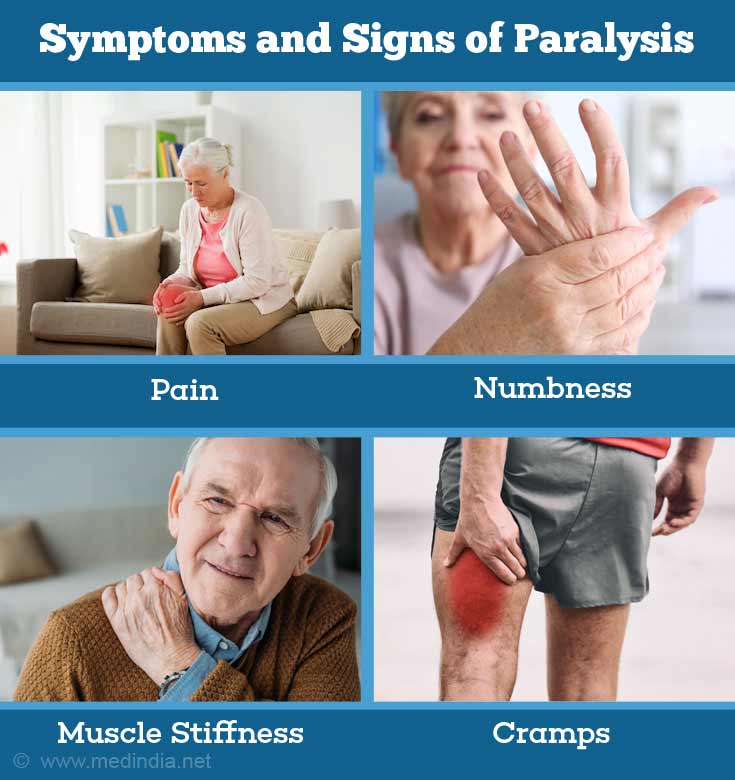What are the Causes of Paralysis?
The most common cause of paralysis is stroke or transient ischemic attack (TIA or “mini-stroke”), which can damage a part of the brain, resulting in the inability of transmitting impulses through the spinal cord. Stroke accounts for 29% of all paralysis cases. Spinal cord injury is the second most common cause of paralysis, which accounts for 23% of all paralysis cases. Spinal cord injury can be caused by motor vehicle accidents, violence, sports injuries, and falls (especially down staircases). Besides these, there are several other causes of paralysis.
The various causes of paralysis and how much they contribute to the condition (expressed as a percentage) are briefly tabulated below:
| Cause of Paralysis | Percent Contribution |
| Stroke | 29% |
| Spinal cord injuries | 23% |
| Multiple sclerosis (MS) / Amyotrophic lateral sclerosis (ALS) or Lou Gehrig’s disease | 17% |
| Cerebral palsy / Bell’s palsy | 7% |
| Polio / Post-polio syndrome* | 5% |
| Trauma | 4% |
| Neurofibromatosis | 4% |
| Congenital defects e.g. Spina bifida | 2% |
* Polio is currently endemic only in three countries – Pakistan, Afghanistan, and Nigeria.
What are the Symptoms & Signs of Paralysis?
Some of the major symptoms and signs of paralysis include the following:
- Loss of Sensation: There may be a loss of sensation in the areas of the body that have been paralyzed. There might also be pain, numbness or a tingling sensation at the sight.
- Loss of Function: There may be a loss of function in the affected areas of the body. This can occur due to total loss of control over the muscles. The muscles may become stiff and jerky, causing spasms. This is known as spastic paralysis. On the other hand, the muscles may become floppy and shrink, which is known as flaccid paralysis. Muscle weakness and cramps can also occur. The joints and bones may also be affected.







